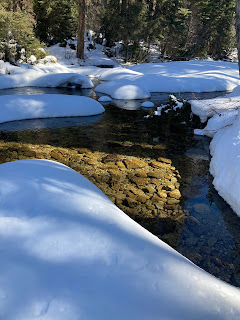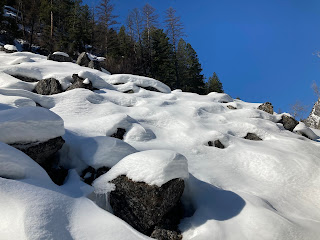How do nitrates impact streams and rivers?
By Brook Bauer
This is the question we’re asking this Science Friday...
First of all, nitrates “are a form of nitrogen, which is found in several different forms in terrestrial and aquatic ecosystems. Nitrates are essential plant nutrients, but in excess amounts they can cause significant water quality problems (1).” On average the nitrate level in “surface water is typically low (less than 1 mg/L); in the effluent of wastewater treatment plants, it can range up to 30 mg/L(1).”
Nitrates in excess amounts can “accelerate eutrophication” which is the excessive presence of nutrients within a water body, typically resulting from land runoff. Then subsequently “causing dramatic increases in aquatic plant growth and changes in the types of plants and animals that live in the stream. This, in turn, affects dissolved oxygen, temperature, and other indicators (1).” You can see this process at work in the chart showing the difference between the “natural river” and the “eutrophic river”.
Naturally, nitrate levels rise in the winter due to stagnant vegetation growth (2). Plants' roots aren’t taking up the nutrients causing leaves to fall and debris to grow, some ending up in streams. This can result in eutrophication. However this is an interesting confluence between natural and unnatural causes as we see human made leaf piles which send concentrated runoff. Runoff is experiencing fluctuations due to different climatic factors from year to year. It could be hypothesized that nitrate levels will experience interesting fluctuations as well.
Interesting right? And somewhat worrying.. However, there has been significant progress over the recent years in quantifying nitrates delivered to streams and even groundwater systems! Some techniques include hydro-graph separation paired with discrete or continuous in-stream nitrate measurements (3). Us at WEN will be keeping our eyes on these interesting techniques when thinking of our data collection in the creek for the following years.
Read more by accessing the links below!
Information cited from:
(1) Environmental Protection Agency. (2012, March 6). 5.7 nitrates. EPA. https://archive.epa.gov/water/archive/web/html/vms57.html
(2) Winter season waterways information: Creek Connections: Allegheny College. Allegheny.edu.
https://sites.allegheny.edu/creekconnections/about-us-2/newsletters/winter-season-waterways/
(3) Johnson, H. M., & Stets, E. G. (2020, November 18). Nitrate in streams during winter low‐flow conditions as an indicator of legacy nitrate. AGU Journals.
https://agupubs.onlinelibrary.wiley.com/doi/10.1029/2019WR026996
Illustrated Chart from Front. Plant Sci., 26 April 2018.




















